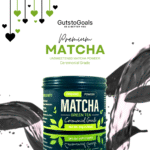What is User Stories?
If you have been working in marketing, development, or design, you have probably heard of user stories. Usually, we start creating our content, product, or service with a particular target audience in mind, which helps us narrow down our customer or user personas. Once these personas are in place, we can now generate User Stories. Based on the traits and preferences of our personas, we can imagine different end-users and their specific needs and goals. These are the user stories.
How to write User Stories?
A user story is a sentence that includes:
- a specific user persona
- the task or goal that he wants to complete
- the reason or benefit derived from the content/product/service
To gain this information, you must ask:
- Who wants the product?
- What does this user want to do with the product?
- Why does this user want to get or receive that goal?
Why do you need User Stories?
As you can see, the customer persona profiles are detailed and it gives you guidance on which market segment to target. The User Story, on the other hand, simplifies and minimizes the detail and makes it more direct in revealing the needs and benefits of your content/product/service. This is a powerful tool to help keep the project user-centered. Instead of working from the creators’ perspective or a single-user perspective, you and your team can consider different angles.
For a UX/UI designer, having a user story allows you to deep dive into the users’ reality. As a result, you can function as the voice of the user during the different stages of the design and development process. You can make the design more understandable and usable to the users when you have a list of customer stories.
In a sense, having user stories will allow you to communicate your future users’ needs. Rather than telling the users what the product can do for them, you are listening and considering their goals to create the product. This is similar to the process of reverse engineering but without the actual product.
When using an Agile framework, the user stories can be handy. Since it can serve as the most basic unit of work to be done, it can clarify the features and functions needed in the product backlog. Also, it can assist in creating teams and delegating tasks. For instance, if you will divide your stories into 3 groups: target users, main users, and others, it will help your team to prioritize tasks. As a result, the team can estimate the resources needed, and create more appropriate UX/UI designs.
Take Away
User stories are short and simple statements of the users’ needs. It requires research or data from your customer personas. Clearly, it should be generated before product design and development begins.







